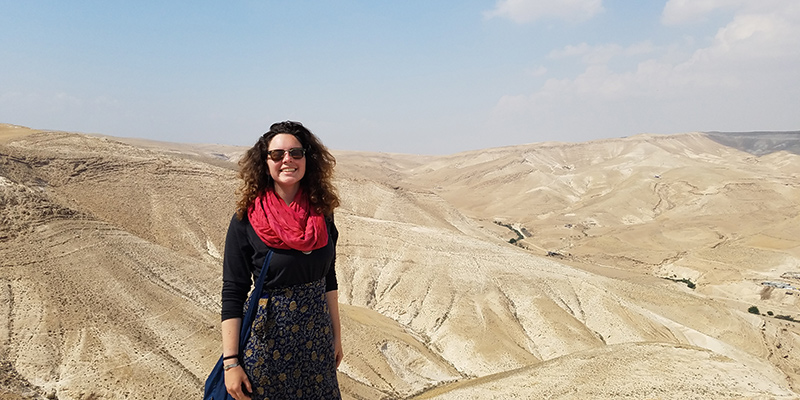The Gund Institute for Environment at UVM announced $200,000 in Gund Catalyst Award seed grants for five interdisciplinary teams today.
The awards, ranging from $10,000 to $50,000, will catalyze new research and action on urgent environmental issues, including city parks’ influence on happiness and well-being, sustainable cashmere in Asia, urban agricultural design, conserving traditional crop varieties in Mexico, and refugee farming communities in Vermont.
The five teams receiving Gund Catalyst Awards for 2018-19 are:
Chris Danforth (Complex Systems) and Jarlath O’Neil Dunne (Rubenstein) will explore how urban parks influence human happiness. Focusing on six U.S. cities, the study will use social media and UVM Spatial Analysis Lab tree canopy data to quantify links between nature and measures of well-being. A goal of the project is to justify expenditures in greenspaces to meet cities’ sustainability goals and improve quality of life.
Jon Erickson and Jed Murdoch (Rubenstein) will pilot a sustainable certification approach for the multi-billion-dollar cashmere industry. Used in luxury clothing, cashmere production has increased unsustainably, damaging fragile ecosystems in China and Mongolia, and threatening the iconic snow leopard and other species. With collaborator Pablo Bose (Geography), and colleagues from Mongolia and Denver Zoo, the project aims to help standardize Earth- and farmer-friendly practices.
Stephanie Hurley (Plant and Soil Science) will use iconic urban farms in Italy to explore sustainable agricultural design and planning. Working with UVM and Italian colleagues, Hurley will investigate the design and benefits – both ecological and social – of historic urban farms to understand and inform future urban agricultural projects that are culturally-engaging, environmentally sustainable, and stand the test of time.
Yolanda Chen (Plant and Soil Science) and Dan Tobin (CDAE) will study farmers’ use of traditional and hybrid crop varieties, and the impacts of these decisions on insect and microbe biodiversity. Working with UVM and international partners in historically significant regions in Mexico, the team will explore farmers’ motivations for conserving traditional “landrace” crop seeds, which can influence biodiversity and reduce farmers’ reliance on water, fertilizer and pesticide inputs.
Eric von Wettberg (Plant and Soil Science) and Travis Reynolds (CDAE) will study seed and crop diversity among refugee farmers in Vermont. The team will explore seed access and genetic diversity, and their effects on adaption to Vermont’s changing climate, farmer livelihoods, and nitrogen and water use. Collaborators include UVM Extension and New Farms for Americans.
The five grants will catalyze new collaborations by 27 UVM faculty and students from four colleges/schools and five departments. At least 6 external partners from 4 countries will participate, including collaborators from North Carolina State University, Italy and Mexico.
“As a campus-wide institute, we are delighted to support these exciting new interdisciplinary research efforts,” says Taylor Ricketts, Director of the Gund Institute for Environment. “Each project shows great promise to advance knowledge, address critical real-world issues, and attract additional funding and recognition to UVM.”
Each of the five funded projects connect multiple Gund themes – climate solutions, resilient communities, sustainability agriculture, and health and well-being. By echoing UN Sustainable Development Goals, these themes connect UVM scholars to global priorities and increase opportunities to impact policy.
This is the second Gund Catalyst Awards competition. In two years, the program has funded over $400,000 in interdisciplinary scholarship, supporting 10 interdisciplinary teams and 50 UVM scholars from across UVM.
Proposals are evaluated on five criteria: intellectual merit, interdisciplinary reach, strength of team, potential for impact, and potential for growth. Additional priority is given to new UVM collaborations with external partners and opportunities for students. Proposals are reviewed by UVM and external evaluators.
The next Catalyst Awards competition will be announced this summer.
Learn more about Gund Catalyst Awards and past recipients.
About the Gund Institute
The Gund Institute for Environment catalyzes environmental research, develops real-world solutions to global issues, and connects UVM with leaders in government, business and beyond. Based at the University of Vermont, the Gund Institute is a newly expanded campus-wide center, where more than 150 faculty, global affiliates, post-docs, and graduate students collaborate widely to understand the interactions among ecological, social, and economic systems.
Source: UVM News





